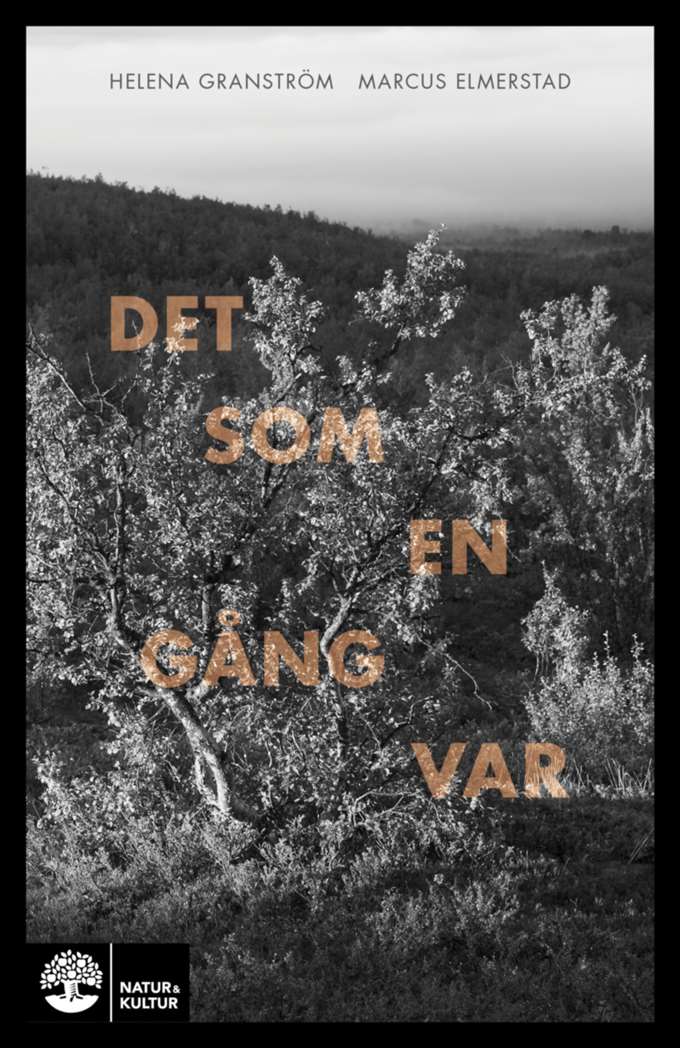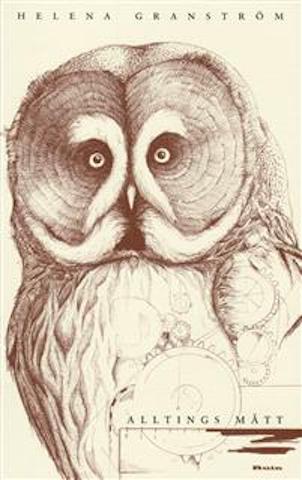




H E L E N A G R A N S T R Ö M
NATURE SCIENCE AND THE RELIGIOUS BELIEF IN THE COMPREHENSEBILITY OF THE WORLD
Essay by Helena Granström
Broadcasted on OBS the 5th of june 2017
(My transl.)
"Does it exist a belief which might unite nature science and religion, is the question the physisist, mathematician and author Helena Granström is questioning; beginning her essay by quoting the first lines of Genesis in The Bible:
In the beginning God created the heavens and the earth. Now the earth was formless and empty, darkness was over the surface of the deep, and the Spirit of God was hovering over the waters.
"Well," said the atheist. "That was not the case at all. In fact, everything began in a singularity 13.8 billion years ago; Immediately after its birth, the universe consisted of an extremely dense and warm area, which expanded immensely quick, thus giving rise to what we today experience as time and space. "
Given both of these texts being read literally, its obvious that there is a conflict between nature science and the myth of creation in the Bible. Let it be that the story of the cosmos's birth in a primordial Big Bang, has clear mythological qualities, and was originally formulated by a physicist who was also a Catholic priest - the fact remains that in terms of facts, science and religion are hardly united.
The origin of the universe, together with questions about the origin of life and humanity, constitutes the perhaps clearest conflict between natural science and, above all, the monotheistic religions.
The contradictions also appear to have been tightened in recent years - partly through what may seem to be increased political and scientific claims from religious quarters, but also through the polemical attitude of influential atheists such as Richard Dawkins.
In such a position is a voice like Philip Clayton's is beneficient. In his book Religion and Natural Sciences, published in Swedish 2017, he presents potential conflicts between science and belief, and how they could be solved. Faced with the results of nature science, stands, according to Clayton, several ways open to religion. One of course is to reject science, and try to overcome it in its own arena; on which the alleged scientific theory of so-called intelligent design is a clear example.
An opposite way would be to humbly revise ones faith based on the state of research; To maintain the elements which are compatible with new scientific findings, and to opt for a metaphorical interpretation of the religious myths. Perhaps the creation of the world in seven days can be understood as a gross chronology? Perhaps evolution occurs just like in Darwin's theories, but invisibly guided by a divine hand?
But possibly, the question of facts is not at all the most important, Clayton seems to think: By undressing the religion its scientific claims, one might find a core that is more urgent than that. The marrow of religion is by no means incompatible with the findings of modern science, but constitutes a complement that can provide tools for thinking about the questions left unanswered by science.
A similar distinction is made in what became the last book of philosopher Ronald Dworkin, published in Swedish 2014, entitled "Religion Without God". The way a religious tradition presents facts or historical facts lacks relevance, Dworkin suggests, in relation to what kind of norms and values it advocates: God may have created the world for seven days or not, but this has no bearing on whether to love his neighbour as yourself. Based on this, Dworkin proposes a much wider definition of the concept of religion than the conventional.
Religion is the conviction that it matters how a human being lives his/her life, and that the world possesses beauty and an inherent value.
The conflict Clayton manages, is with the terminology of Dworkin's , rather than a contradiction between religion and science, a contradiction between the theists and atheists; Between those who believe in God, and those who do not. Particularly acute is the conflict between the theists, and the so-called naturalists who are convinced of the ability of science to encompass everything. Dworkin's understanding of the terms helps us to perceive the fundamental layer of faith, that lies hidden under the pretence of science.
But even more interesting is that it exposes a layer of faith also under scientific claims; What Dworkin calls religious atheism. It is a belief that the universe as a whole is understandable, and thus possible to describe in terms of a definitive, all-encompassing universal and comprehensive theory; A belief that is often accompanied by the conviction that this theory will also, in some sense, be beautiful.
The fact that Dworkin calls the beliefs that engage in natural science research, ”religious” does not mean to equate science with any belief. Rather, it is to argue that the perception of the world that makes it understandable in the end, is not possible to support with the scientific method:
There is no scientific fact that doesn´t require any kind of nonscientific assumption to be meaningful, be it even just the assumption that it is possible for human beings to understand the surrounding world
Religious atheism, Dworkin argues, makes up the motivation for the kind of searching after a physical theory in progress right now, that might combine the quantum mechanics description of the smallest entity, with the description of the greatest by the theory of relativity. From this theory, the researchers not only expect accurate predictions of observations and experimental results, but also that it should be concise and mathematically elegant; In other words, beautiful. This kind of esthetic of physics, which for Dworkin is an example of religious atheism, has since long been a compass for research, and quite often been decisive of which choice to make between two different potentially accurate theories: it is the one who makes us want to believe in E = mc ^ 2, but also the one who makes some hesitate in front of the complicated approximations of string theory or the apparently arbitrary particle catalogue in the standard model of particle physics. However, how beauty is understood in this context is not obvious:
Symmetry is often emphasized as central, but something being symmetrical does not necessarily imply that it is beautiful, nor within mathematics.
In the physical wold this is apparent. We are attracted by that face which looks the same by being looked at in a mirror, as being looked at directly, but we hardly like a desert better from which the views are the same in all directions, than a varied landscape with forests.
Let's assume that one day, according to the hopes of many scientists, we find a beautiful and mathematically consistent theory that seems to describe reality completely. How can we be sure that it is the only possible one? There are few theories that have the ability to produce arguments for their own validity.
Addressing issues beyond the scope of theories is a challenge that both natural science and religion have lived for a long time:
Like the church father St. Augustine once claimed that God himself created time, and that the question of what proceeded God was nonsense, has the question of what preceded the universe, since long been answered with that it was primarily in Big Bang the dimension that we call time arose.
First recently, when theories of so called eternal inflation in which local universes arises in different parts of the universe, has this explanation been questioned, which however only has dislodged the problematic, because what then was it, that triggered the inflation? To imagine a scientific experiment giving an answer to that, is difficult - probably as difficult as imagining one that can prove the existence of an almighty Good.
Helena Granström, author with a background as a physisist and mathematician
Litteratur
Philip Clayton: Naturvetenskap och religion. Översättning Christoffer Skogholt. Dialogos förlag, 2017.
Ronald Dworkin: Religion utan Gud. Översättning Henrik Gundenäs. Daidalos förlag, 2014.

En del av Michelangelos gestaltning av Adams skapelse, från Sixtinska kapellet, tillsammans med Adolf Schallers tolkning stjärnformationer I ett mycket ungt universum. Bilden är ett montageFoto: Adolf Schaller/AP/TT
The Swedish text:
NATURVETENSKAPEN OCH DEN RELIGIÖSA TRON PÅ VÄRLDENS BEGRIPLIGHET
OBS SR P1 den 5 juni 2017
”I begynnelsen skapade Gud himmel och jord.
Jorden var öde och tom, djupet täcktes av mörker och en gudsvind svepte fram över vattnet. Gud sade: ”Ljus, bli till!” Och ljuset blev till. Gud såg att ljuset var gott, och han skilde ljuset från mörkret.
Gud kallade ljuset dag, och mörkret kallade han natt. Det blev kväll och det blev morgon. Det var den första dagen.”
”Nä”, säger ateisten. ”Så var det inte alls. Faktum är att allting tog sin början i en singularitet för 13,8 miljarder år sedan; strax efter sin födelse utgjordes universum av ett extremt tätt och varmt område, som expanderade ofantligt snabbt, och därigenom gav upphov till det vi idag känner som tid och rum.”
Givet att man läser dem båda bokstavligt, är det uppenbart att det finns en konflikt mellan naturvetenskapens och kristendomens skapelseberättelser. Låt vara att berättelsen om kosmos födelse i en ursmäll, en Big Bang, har klart mytologiska kvalitéer, och faktiskt ursprungligen formulerades av en fysiker som också var katolsk präst – faktum kvarstår att när det gäller sakförhållanden låter sig vetenskap och religion svårligen förenas.
Universums uppkomst utgör, tillsammans med frågor om livets och människans ursprung, den kanske tydligaste konfliktytan mellan naturvetenskapen och framförallt de monoteistiska religionerna.
Motsättningarna tycks också ha skärpts under senare år – delvis genom vad som kan tyckas vara ökade politiska och vetenskapliga anspråk från religiöst håll, men också genom den polemiska attityden hos inflytelserika ateister som Richard Dawkins.
I ett sådant läge är en röst som Philip Claytons välgörande. I boken ”Religion och naturvetenskap”, som utkom på svenska våren 2017, presenterar han potentiella konflikter mellan vetenskap och tro, och hur de skulle kunna lösas. Inför mötet med naturvetenskapens resultat står, menar Clayton, flera vägar öppna för religionen. En är förstås att avvisa vetenskapen, och försöka övervinna den på dess egen arena; på detta är den påstått vetenskapliga teorin om så kallad intelligent design ett tydligt exempel.
En motsatt väg skulle vara att ödmjukt revidera sin tro utifrån forskningsläget; att bibehålla de delar som är förenliga med nya vetenskapliga rön, och att i övrigt välja en metaforisk tolkning av de religiösa myterna. Kanske kan skapandet av världen på sju dagar förstås som en grov kronologi? Kanske sker evolutionen precis som i Darwins teorier, men osynligt vägledd av en gudomlig hand?
Men möjligen är sakfrågorna överhuvudtaget inte det mest väsentliga, tycks Clayton anse: När man klär av religionens dess vetenskapliga anspråk, finner man en kärna som är mer angelägen än dessa. Denna religionens märg är på intet sätt oförenlig med den moderna vetenskapens resultat, utan utgör ett komplement, som kan tillhandahålla redskap för att tänka kring de frågor som vetenskapen lämnar obesvarade.
En liknande distinktion görs i vad som kom att bli filosofen Ronald Dworkins sista bok, utgiven på svenska år 2014, med titeln ”Religion utan Gud”. Hur en religiös tradition framställer sakförhållanden eller historiska fakta saknar, menar Dworkin, relation till vilka normer och värderingar den förespråkar: Gud kan ha skapat världen på sju dagar eller inte, men detta har ingen bäring på huruvida man skall älska sin nästa såsom sig själv. Baserat på detta föreslår Dworkin en klart vidare definition av begreppet religion än den konventionella:
Religion är övertygelsen om att det spelar roll hur en människa lever sitt liv, och att världen besitter skönhet och ett inneboende värde.
Den konflikt Clayton hanterar är med Dworkins språkbruk, snarare än en motsättning mellan religion och vetenskap, en motsättning mellan teister och ateister; mellan dem som tror på gud, och dem som inte gör det. Särskilt akut är konflikten mellan teisterna, och de så kallade naturalister som är övertygade om vetenskapens förmåga att omfatta allt. Dworkins begreppsförståelse hjälper oss att se det fundamentala skikt av tro som ligger dolt under religionens vetenskapliga anspråk.
Men ännu mer intressant är att den blottlägger ett skikt av tro också under vetenskapens vetenskapliga anspråk; vad Dworkin kallar religiös ateism. Det handlar om tron att universum i sin helhet är begripligt, och således möjligt att beskriva i termer av en slutgiltig, allomfattande teori; en tro som ofta beledsagas av övertygelsen att denna teori också kommer att, i någon bemärkelse, vara vacker.
Att som Dworkin kalla de övertygelser som driver naturvetenskaplig forskning religiösa, innebär inte att likställa vetenskapen med vilken tro som helst. Snarare är det att hävda att den uppfattning om världen som gör vetenskapen begriplig i sista instans inte är möjlig att belägga med den vetenskapliga metodens hjälp: Det finns inget vetenskapligt faktum som inte kräver någon form av utomvetenskapligt antagande för att vara meningsfullt, om det så bara är antagandet att det är möjligt för människan att förstå sin omvärld.
Den religiösa ateismen utgör, menar Dworkin, motivation för det sökande som just nu pågår efter en fysikalisk teori som förenar kvantmekanikens beskrivning av det allra minsta, med relativitetsteorins beskrivning av det allra största. Av denna teori förväntar sig forskarna inte enbart korrekta förutsägelser av observationer och experimentresultat, utan dessutom att den skall vara koncis och matematiskt elegant; med andra ord, vacker. Denna fysikens estetik, som för Dworkin alltså är ett exempel på religiös ateism, har länge utgjort en kompass för forskningen, och inte sällan väglett valet mellan två potentiellt riktiga teoribyggen: Det är den som får oss att vilja tro på E=mc^2, men också den som får somliga att tveka inför strängteorins komplicerade approximationer eller den skenbart godtyckliga partikelkatalogen i partikelfysikens standardmodell. Hur skönhet skall förstås i det här sammanhanget är dock inte uppenbart:
Symmetri framhålls ofta som centralt, men att något är symmetriskt innebär inte med nödvändighet att det är vackert, inte heller inom matematiken.
I den fysiska världen är detta uppenbart: Vi tilltalas av det ansikte som ser likadant ut i en spegel som när det betraktas direkt, men tycker knappast bättre om en öken, där utsikten är densamma i alla riktningar, än ett varierat skogslandskap.
Låt oss då anta att vi en dag, i enlighet med många vetenskapsutövares förhoppningar, finner en vacker och matematiskt konsistent teori som tycks beskriva verkligheten fullständigt. Hur kan vi då vara säkra på att det är den enda möjliga? Det är få teorier som har förmågan att producera argument för sin egen giltighet.
Att hantera de frågor som ligger utanför teoriernas räckvidd är en utmaning som såväl naturvetenskapen som religionen har levt med länge:
Liksom kyrkofadern Augustinus en gång hävdade att Gud själv skapade tiden, och att frågan om vad som kom före Gud således är nonsens, har frågan på vad som kom före universum under lång tid besvarats med att det var först i Big Bang som den dimension vi kallar tid uppstod.
Först på senare år, då teorier om så kallad evig inflation där lokala universa ständigt uppstår i olika delar av rymden, har denna förklaring kommit att ifrågasättas – vilket egentligen bara innebär en förflyttning av problematiken, för vad var det då som satte igång inflationen? Att föreställa sig ett vetenskapligt experiment som kan ge svar på den frågan är svårt – kanske lika svårt som att tänka sig ett som kan påvisa existensen av en allsmäktig gud.
Helena Granström, författare med bakgrund inom fysik och matematik
Litteratur
Philip Clayton: Naturvetenskap och religion. Översättning Christoffer Skogholt. Dialogos förlag, 2017.
Ronald Dworkin: Religion utan Gud. Översättning Henrik Gundenäs. Daidalos förlag, 2014.